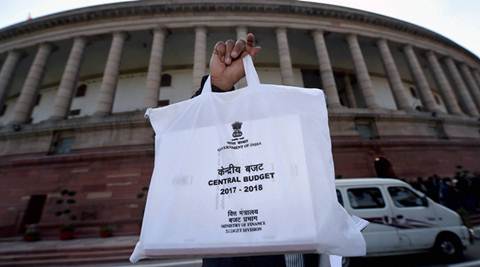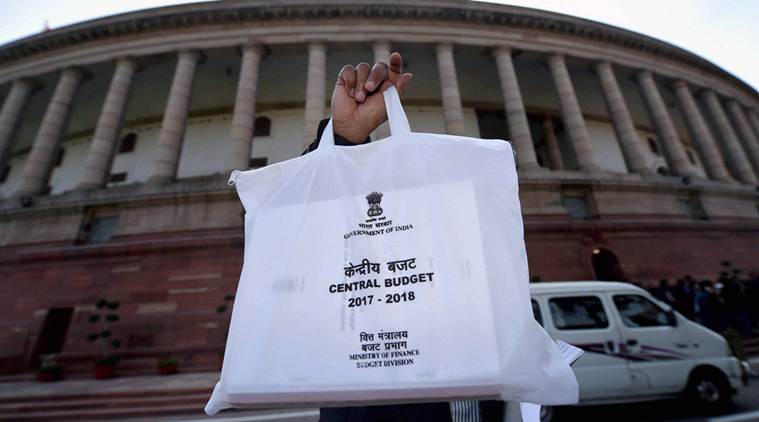Opinion A launch pad for 2019
Revenue receipts the FM did not provision for this time will allow him to present a feel-good budget next year.
 New Delhi: An official showing the copy of Union Budget 2017-18 at Parliament after its presentation in the Lok Sabha in New Delhi on Wednesday. PTI Photo by Manvender Vashist (PTI2_1_2017_000203A)
New Delhi: An official showing the copy of Union Budget 2017-18 at Parliament after its presentation in the Lok Sabha in New Delhi on Wednesday. PTI Photo by Manvender Vashist (PTI2_1_2017_000203A)  An official showing the copy of Union Budget 2017-18 at Parliament after its presentation in the Lok Sabha in New Delhi. PTI Photo
An official showing the copy of Union Budget 2017-18 at Parliament after its presentation in the Lok Sabha in New Delhi. PTI Photo
Finance Minister Arun Jaitley’s budget for 2017-18 is not merely a statement of accounts for the next financial year. It gives significant clues to what the budget for the following year could entail. When he rises to present his fifth budget on February 1, 2018, the Narendra Modi government will be staring at the Lok Sabha elections scheduled for May 2019. Needless to say, it will be a crucial test, and a lot will be at stake for Modi, irrespective of the outcome of the Uttar Pradesh Assembly elections. In most of his public addresses, rallies or speeches since assuming charge, the prime minister has sought 10 to 15 years to bring to fruition many of his ideas. Several schemes of the government indeed go beyond the five-year mandate the BJP received in 2014. Dumping the five-year plans, the Niti Aayog, modelled as a thinktank by the NDA government, too is working on a 15-year vision document. In private conversations, the prime minister has often exuded the confidence of retaining his mandate beyond 2019.
Jaitley will carry on his shoulders the burden of having to meet the expectations of his party in the last full budget to be presented next February. Of course, the prime minister and his office have put their heads together on budgets presented so far. Modi has left his imprint on every budget. For instance, during budget discussions last year, an influential section within his own office and the finance ministry made a fervent pitch for a step-up in expenditure to lift the pace of economic growth. They had good reasons. Private investment was moribund, and higher public spend was seen as an imperative. He gave this a patient hearing, but eventually chose not to spend an additional Rs 40,000 crore sought by those rooting for growth. He did tell them they would not be short of funds if required during the course of the year. It hasn’t been any different this year.
Certainly, Jaitley must have been under tremendous pressure this year too, given the bleak outlook at home and abroad. The economy was already riddled with complex problems, the solutions for which are not politically palatable for Modi. The large non-performing assets have left public sector banks lifeless, and despite this wound festering for almost four years, the prime minister has chosen to ignore it. Resolving this economic problem — as reflected in a decelerating gross fixed capital formation over the years — requires political guts, asking banks to take big hair cuts, write down losses. Modi fears this will give the Congress and the Opposition a handle to mock him for letting the corporates get away. He does not seem to have recovered from Rahul Gandhi’s “suit-boot ki sarkar” jibe two years ago.
Despite the huge downside to growth, Jaitley hasn’t loosened his purse strings. The budget is shorn of the heroics shown by the prime minister in his radical demonetisation decision in November. There is no remarkable step up in spending to compensate the informal sector that is a big employer or farmers. The total expenditure for 2017-18 is estimated to increase by just Rs 1,32,328 crore (6.57 per cent), compared with a phenomenal Rs 2,23,624 crore (12.48 per cent) boost that budget 2016-17 received. The projections on gross tax receipts for the next year are modest at 12 per cent against 17 per cent this year. In direct taxes, the budget estimate for the next year is approximately the same as that of the Revised Estimate for the current year, despite expected buoyancy in personal income tax.
But interestingly, Jaitley hasn’t budgeted for two substantial revenue components in his Receipts document — the tax inflows from the Income Disclosure Scheme (IDS) announced post-demonetisation and a windfall equal to the quantum of 500 and 1,000 rupee notes not returning to the formal banking system. Put together, on a conservative basis, these could yield the exchequer at least Rs 1,50,000 crore during the course of 2017-18. That is a big cushion he has secretly kept outside the budget. While the IDS receipts will accrue to direct taxes, the windfall due to demonetisation will flow into the non-tax revenue kitty of the government. In addition to this, there will be deposits into the Pradhan Mantri Garib Kalyan Yojana, an interest-free source of debt available to the government for a four-year period. These sums will be available to the government for any additional expenditure during the course of 2017-18, and also give Jaitley the confidence to meet the fiscal deficit target of 3.2 per cent of the GDP for the next year.
In other words, the government’s books will provide it considerable leeway to present a grandiose pre-election budget. The UPA government did it in the 2013-14 budget by increasing the total spend by a phenomenal 16.38 per cent. This year, Jaitley chose not to invoke the escape clause provided for in the Fiscal Responsibility and Budget Management committee report that allows him to exceed the deficit target by 0.5 per cent of the GDP in 2017-18.
But people’s expectations will be different next year. Jaitley has armed himself in this budget to present a “feel-good” budget ahead of 2019’s Lok Sabha elections.





